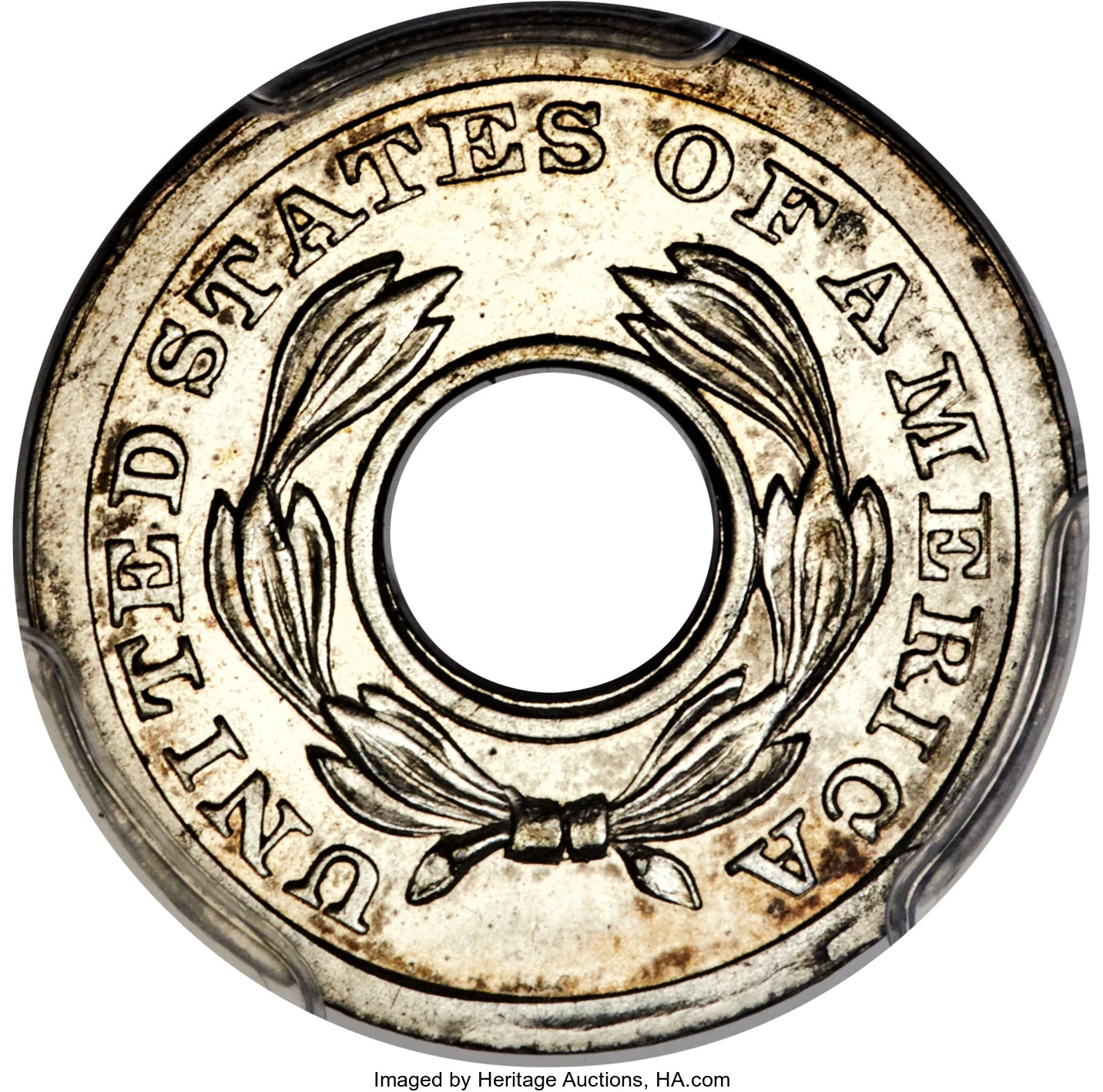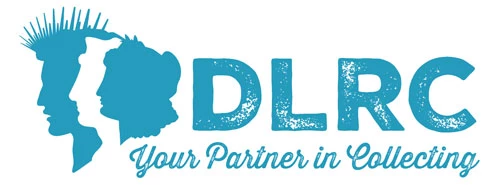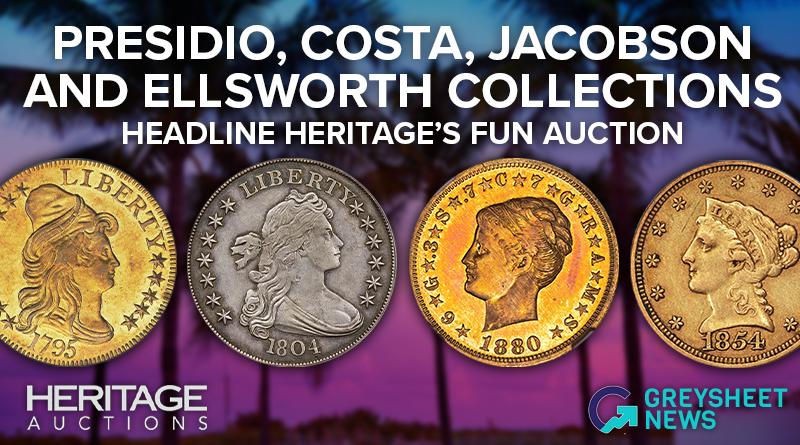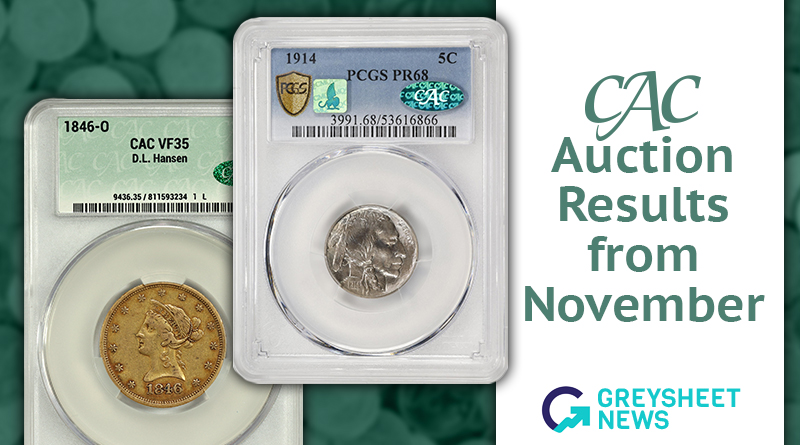Greysheet & CPG® PRICE GUIDE
- U.S. Coins /
- Pattern Coinage /
-
1851 Pattern Values
About This Series
History and Overview
The patterns of 1851 reflect the efforts of 1850—the endeavor to create a more useful one-cent piece of smaller diameter than the large copper version that had been in use since 1793. Billon was again the metal of choice.
In 1850 and later, certain ring-form or annular patterns were struck. Original 1851 pattern cents were struck in billon. Restrikes were made in copper and various alloys, including billon.
As part of James Ross Snowden’s restriking activities in 1859, Proof examples of certain rare silver dollars of earlier dates were made, including the 1851 and 1852. For the 1851 dollar, the original die (with four-date digit logotype slanting slightly upward and the date close to the base of Liberty) probably could not be located in 1859. In any event, a different die, not originally used in 1851, with the date horizontal and centered, was employed. Whether this die was created new in 1859 and given an 1851 date, or whether it was made in 1851 and not used at that time, is not known. Restrikes in silver are well known on the numismatic market today and are highly prized, for original strikings are extremely rare and in any event are not known to have been made in Proof format. Listed in the present text are off-metal impressions in copper and nickel.
Collecting Perspective
One or more examples of the pattern cents of this year, J-127 through J-131, can be obtained relatively easily, either in perforated or unperforated form, most being restrikes. Collectors desiring just a single coin might opt for a billon original.
The off-metal strikes of the 1851 silver dollar occasionally come on the market. More often seen are regular silver impressions (not listed here). The nickel—possibly copper-nickel—impression is unique.
Catalog Detail
Legal Disclaimer
The prices listed in our database are intended to be used as an indication only. Users are strongly encouraged to seek multiple sources of pricing before making a final determination of value. CDN Publishing is not responsible for typographical or database-related errors. Your use of this site indicates full acceptance of these terms.




















| Patterns (1851) | Value Range | Favorite | |||
|---|---|---|---|---|---|
| Patterns (1851) | Value Range | ||||
|
$10,500
-
$29,000
$10,500 - $29,000
|
||||
|
$17,000
-
$20,000
$17,000 - $20,000
|
||||
|
-
|
||||
|
-
|
||||
From the Greysheet Marketplace
Buy Now: $3,695.00
Buy Now: $2,890.63
Buy Now: $120,000.00
Buy Now: $38,900.00
Buy Now: $5,500.00
Buy Now: $37,000.00
Buy Now: $3,121.88
Buy Now: $37,000.00
Buy Now: $31,500.00
Buy Now: $125,000.00
Related Stories (powered by Greysheet News)
View all news
Greysheet Catalog Details
History and Overview
The patterns of 1851 reflect the efforts of 1850—the endeavor to create a more useful one-cent piece of smaller diameter than the large copper version that had been in use since 1793. Billon was again the metal of choice.
In 1850 and later, certain ring-form or annular patterns were struck. Original 1851 pattern cents were struck in billon. Restrikes were made in copper and various alloys, including billon.
As part of James Ross Snowden’s restriking activities in 1859, Proof examples of certain rare silver dollars of earlier dates were made, including the 1851 and 1852. For the 1851 dollar, the original die (with four-date digit logotype slanting slightly upward and the date close to the base of Liberty) probably could not be located in 1859. In any event, a different die, not originally used in 1851, with the date horizontal and centered, was employed. Whether this die was created new in 1859 and given an 1851 date, or whether it was made in 1851 and not used at that time, is not known. Restrikes in silver are well known on the numismatic market today and are highly prized, for original strikings are extremely rare and in any event are not known to have been made in Proof format. Listed in the present text are off-metal impressions in copper and nickel.
Collecting Perspective
One or more examples of the pattern cents of this year, J-127 through J-131, can be obtained relatively easily, either in perforated or unperforated form, most being restrikes. Collectors desiring just a single coin might opt for a billon original.
The off-metal strikes of the 1851 silver dollar occasionally come on the market. More often seen are regular silver impressions (not listed here). The nickel—possibly copper-nickel—impression is unique.
Catalog Detail
Legal Disclaimer
The prices listed in our database are intended to be used as an indication only. Users are strongly encouraged to seek multiple sources of pricing before making a final determination of value. CDN Publishing is not responsible for typographical or database-related errors. Your use of this site indicates full acceptance of these terms.










 Loading more ...
Loading more ...











